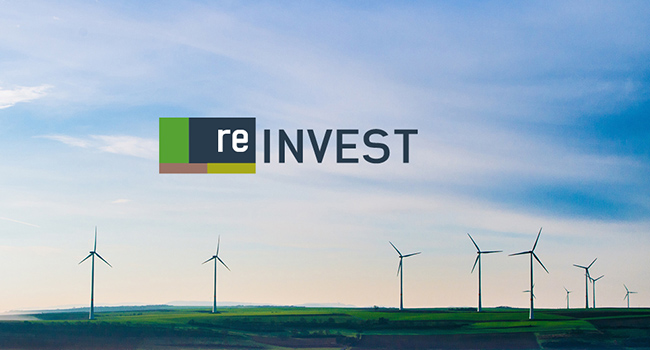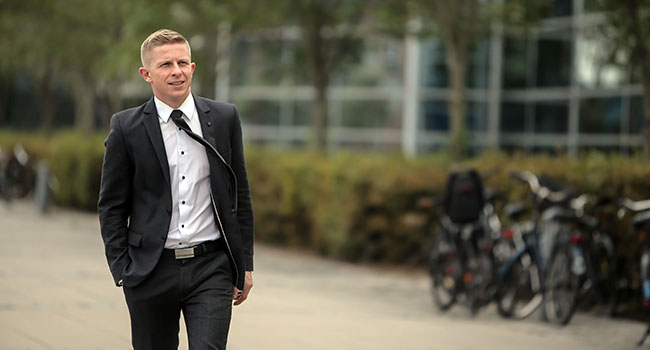Today, renewable energy sources like wind and solar power are destined to become one of tomorrow's cheapest sources of electricity. To take advantage of these energy resources, it is important that they interact with the rest of the energy system and across national borders. The message from researchers is that in the future, the entire energy system will be integrated across the electricity, heat and transport sectors.
The EU has a political objective to reduce carbon emissions by 80% in 2050. In Denmark, the aim is to be free of fossil fuels such as oil, coal and natural gas in 2050. In a new project, partners from very different parts of the energy system, in conjunction with Aalborg and Aarhus Universities, aim to find answers that go far beyond the individual sector or technology and that can make the transition as efficient and cost-effective as possible. Without a coherent investment strategy, the result can be very costly for society.
- The vision is to create robust, cost-effective recommendations for investments that create jobs and growth for the renewable energy industry, explained Brian Vad Mathiesen, Professor in Energy Planning at Aalborg University and head of the RE-Invest project.
In the case of wind power, the power produced can be combined with technologies such as electrolysis and large-scale heat pumps that can benefit the district heating network and push out fossil fuels in transport using thermal and gas storages. If this is combined and balanced with energy savings, production capacities for electricity and heating can be reduced significantly.
- Most researchers and decision makers have traditionally viewed each energy sector individually, but what we are doing here is looking at the transition as a complete redesign of the entire energy system. This will allow us to see how we can exploit the synergies in the energy system as a whole, said Brian Vad Mathiesen.
The integrated energy system is a unique Danish approach that has attracted major international university partners to the project.
- At Stanford University, we have specific knowledge about grid stability that can benefit the project, while learning from Aalborg University’s holistic approach to the energy system. RE-Invest is extremely relevant for Stanford because its vision will allow collaboration and exchange of information with European partners, enabling more accurate and relevant studies of both Europe and the United States, said Mark Z. Jacobson, Professor at Stanford University.
In conjunction with the partners in the energy industry, the researchers will identify the role of different key technologies. From this, they will be able to advise on investment strategies and provide knowledge to corporate research and development departments so they can develop technologies that fit future energy systems.
- Our role in the project will be to explore how frequent data from smart meters can be used proactively to support decisions in the integrated energy system so energy production can be better planned in combination with renewable energy and how data can help energy efficiency as well as energy savings, said Steen Schelle Jensen, Head of Product Management at meter manufacturer Kamstrup.
The partners in the project are: Aalborg University, Aarhus University, Østfold Research, Stanford University, Frankfurt Institute for Advanced Studies, Danfoss, the Danish District Heating Association, DONG Energy, EMD International, Energinet.dk, the Danish Energy Agency, Haldor Topsøe, HMN Naturgas, Kamstrup, MP Pension, Statkraft and Aalborg CSP.
Follow the project on Twitter @ReInvestEU and the project website www.reinvestproject.eu.
Societal potential
- It is essential for our security of supply that we as a society have thought through what our energy system might look like. We need a coherent investment strategy for new technology, infrastructure and electricity and gas interconnections.
- For example, Denmark uses between €5-10 billion annually on fossil fuels depending on international fuel prices. The project will help identify how we can spend less on fossil fuels and more money on investments in the energy system.
- The political aim of the EU is to reduce greenhouse gas emissions by 80% in 2050. This requires huge investments. Therefore, it is important to identify the feasible and robust long-term investments that will keep costs under control.
- Investments must take account of the fact that the price of biomass or electricity, for example, can fluctuate, as we know today in the case of oil.
Innovation Fund Denmark investment: DKK 17 million
Total budget: DKK 27 million
Duration: 4 years
Official title: RE-Invest – Renewable Energy Investment Strategies – A two-dimensional interconnectivity approach
Contact
- Aalborg University: Brian Vad Mathiesen (Project Head), Professor, Tel.: +45 2944 0877
- Aalborg University: Poul Alberg Østergaard (Deputy Head of RE-Invest), Professor, Tel.: +45 2947 5016
- Aarhus University: Gorm Bruun Andresen, Associate Professor, Tel.: +45 2942 6179
- Kamstrup: Steen Schelle Jensen, Head of Product Management, Tel.: +45 8993 1191
- Danfoss: Jan Eric Thorsen, Director of DHS-TA Application Centre, Tel.: +45 30 58 04 44
- HMN Naturgas: Frank Rosager, Head of Business Development, Tel.: +45 4055 1014
About the partners
- Aalborg University (Denmark), Aarhus University (Denmark), Østfold Research (Norway), Stanford University (USA) and the Frankfurt Institute for Advanced Studies (Germany) are universities and research institutions with significant theoretical knowledge on energy system analysis and modeling integrated smart energy systems. Knowledge of the overall system coupled with practical knowledge about individual technologies, sectors and infrastructures – as represented by a number of important key partners from industry and trade associations – gives the project added value.
- Danfoss is specialized in heating, cooling and energy efficiency.
- Kamstrup produces smart meters and ICT solutions for the electricity, heat and water sectors.
- EMD International manufactures software for ICT and management at the facility level.
- Haldor Topsoe specializes in technology that, for example, can produce fuels for renewable energy for transport.
- Aalborg CSP develops and supplies innovative renewable energy technologies and is a specialist in advanced energy systems using thermal storage technology and solar technologies combined with other energy sources designed for industries and power plants worldwide.
- Energinet.dk has the overall responsibility for Denmark's electricity and gas transmission networks.
- The Danish District Heating Association is the trade organization for Denmark's district heating companies.
- HMN Naturgas supplies gas in 57 municipalities in the Copenhagen metropolitan area and Central and Northern Jutland.
- DONG Energy is an energy company with a strong profile in renewable energy across the electricity and heating sectors.
- Statkraft, Europe's largest producer of renewable energy, is a specialist in hydropower, wind power, gas and district heating, headquartered in Norway.
- The Danish Energy Agency is an authority with knowledge and data on energy production, energy supply and energy consumption.
- MP Pension is a member‐owned pension fund which has made a special climate allocation particularly focusing on investments in companies whose products contribute to solving the global climate change challenge or in other ways benefit the environment.
Brian Vad Mathiesen, Professor at Aalborg University and head of the RE-Invest project. Photo: Christoph Lissalde.



